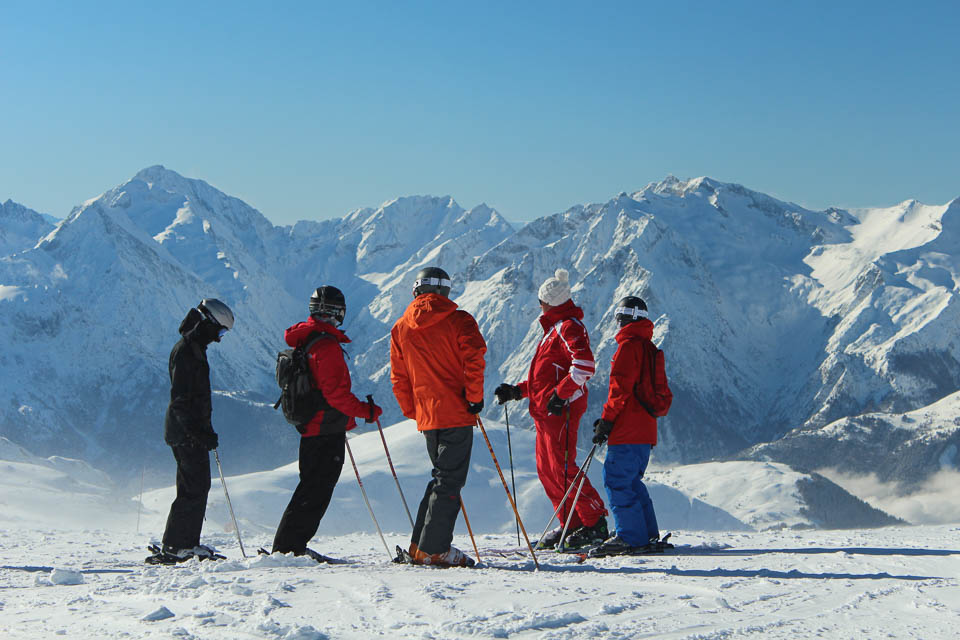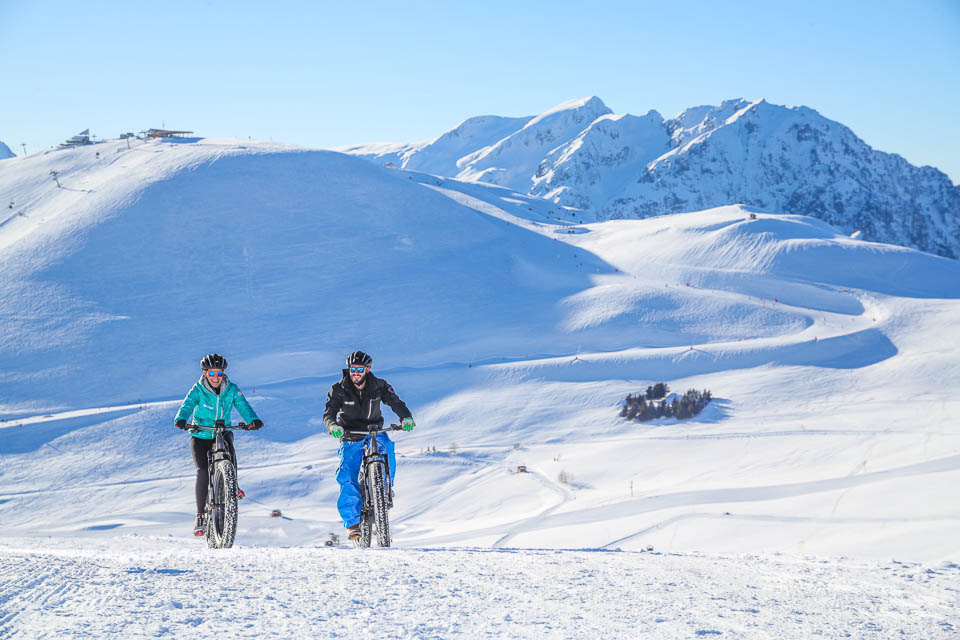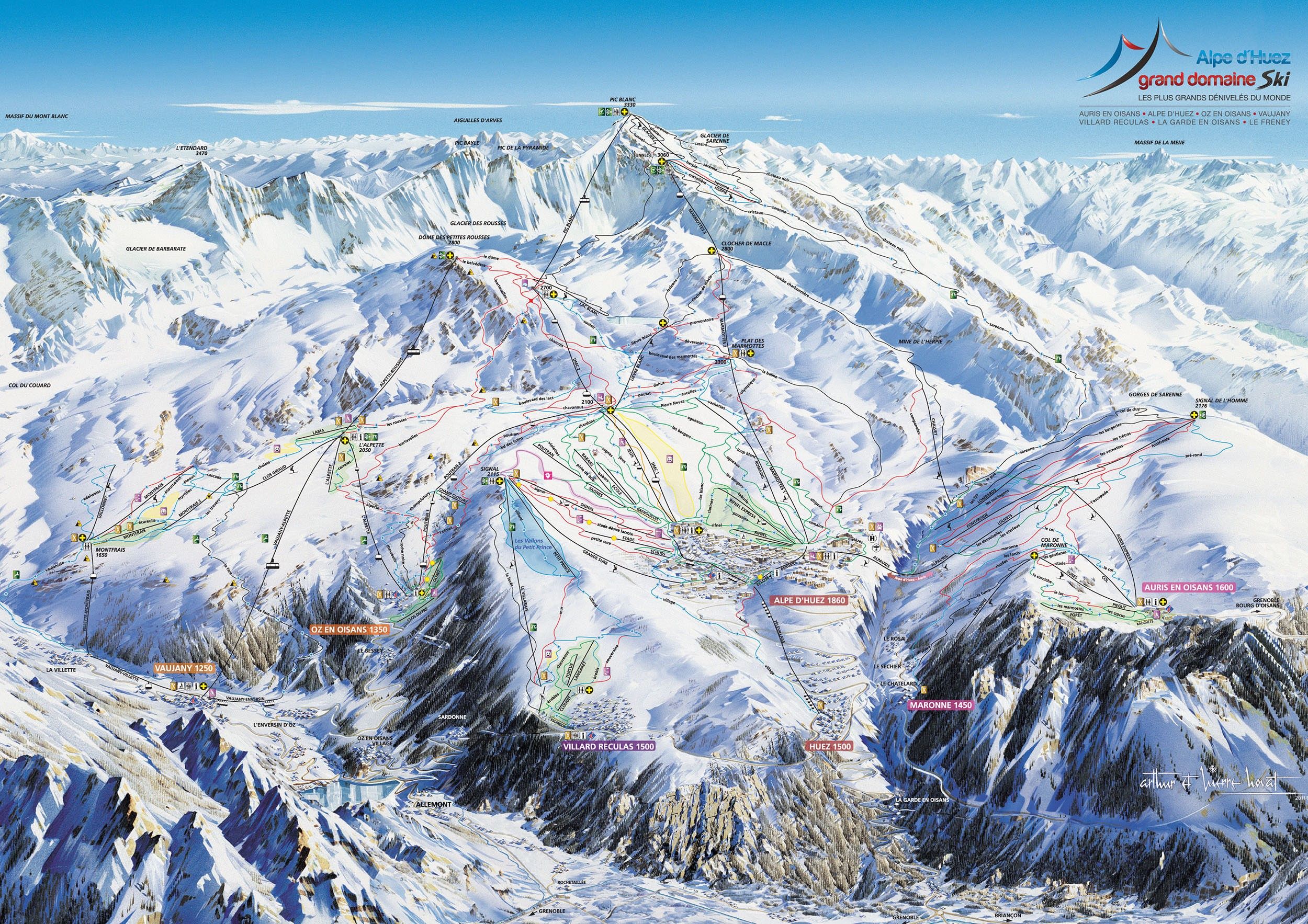Alpe d'Huez - introduction

Deep in the Rhone Alps, Alpe d’Huez Grande Domaine Ski has become one of France’s big resorts – in every way. In extent, reputation, and history. Its vast ski area embraces several villages, ancient and modern.
Constant development, both on and off the slopes, has made Alpe d’Huez one of the world’s largest ski resorts with a great deal of appeal and a welcoming reputation. The most recent building has been in an attractive Alpine chalet style. Among French skiers and boarders, the resort is regularly voted among the country’s top five winter sports destinations. In 2024, it’s arguably on par with the likes of Val d’Isère – but thankfully, with less painful prices.
Alpe d’Huez has always been known for its excellent intermediate and beginner slopes. However, it has become a magnet for expert skiers from all over the world. Free riders are drawn to its wealth of high-altitude, steep terrain. From the top of Pic Blanc (3330m), four runs follow a vertical drop of 2000 metres (to Oz en Oisans, at 1135m).
 Photo: Daniel Elkan
Photo: Daniel Elkan
Of course, Alpe d’Huez is famous not just for skiing: the resort is one of the main mountain elements (and its steep hairpin bends one of the most testing features) in the Tour de France, and has been a stage finish almost every year since 1976. Its summer market has benefited from this connection – making it a truly year-round resort.
A final plus point is the high number of sunny days you can expect in winter – hence the local expression: ‘When it’s not sunny in Alpe d’Huez, it must be night-time.’ All in all, you really can’t go wrong with Alpe d’Huez.
 Photo: Laurent Salino
Photo: Laurent Salino
Highlights
- Fabulous range of skiing, with particularly long runs
- Lift pass that covers five villages, 250km of groomed piste, and 84 lifts
- More sunny days than most French resorts
- Good selection of mountain restaurants
- Excellent and easily accessible nursery slopes
- Wide accommodation options and a choice of villages
Lowlights
- Some of the more popular intermediate runs can get crowded
- The amount of sun on some slopes means they can get very worn (although efficient snowmaking generally keeps runs open)
- Most skiing is above the tree line, so in bad weather visibility can be a problem
- Many tougher, more exciting runs are at high altitudes and are vulnerable to closure in bad weather

| Village altitude | 1860m |
| Ski altitude | 1125–3330m |
| Ski area | 250km |
| Blue runs | 37 |
| Red runs | 39 |
| Black runs | 17 |
| Total runs | 135 |
| Snowparks | 3 |
| Chair lifts | 23 |
| Drag lifts | 30 |
| 6-day ski pass | TBC |
| 1-day ski pass | TBC |

